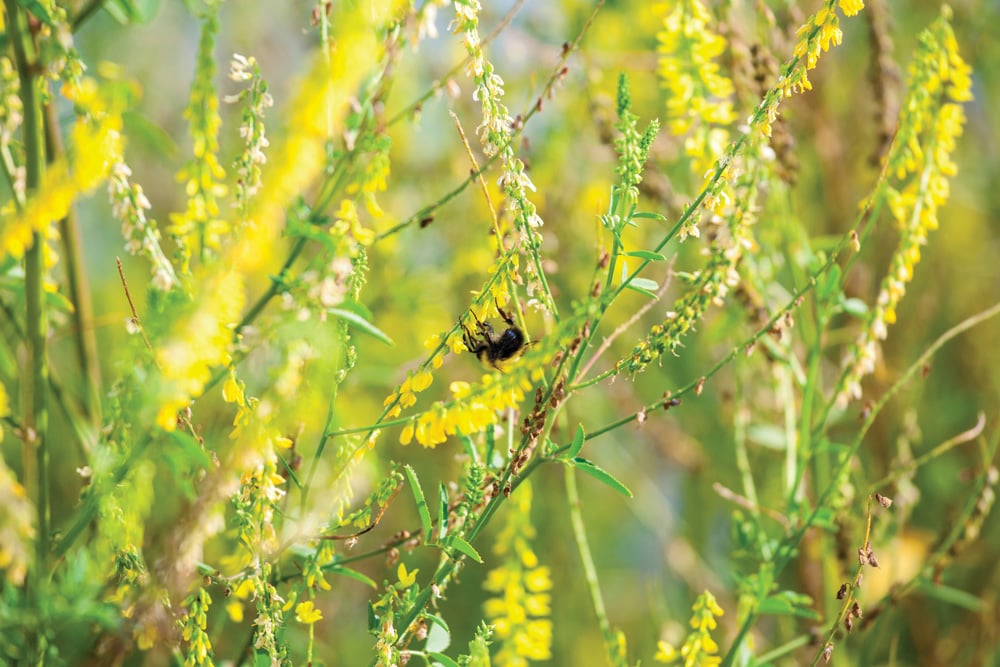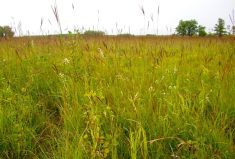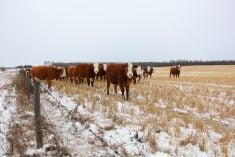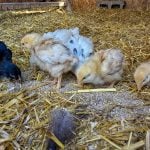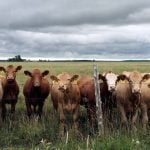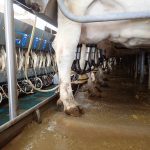Pilgrim Winslow’s life had mainly been in the fast lane of oil exploration, successful businesses and high-level finance. He retired early and bought a half-section farm east of Regina. Winslow had built a small barn, a set of corrals and spent his days looking after 16 two-year-old Hereford heifers, bred to calve near the end of March.
Somewhat a greenhorn, Winslow read extensively and had a good concept about the routines of calving and when he needed to summon help, which happened much sooner than he expected.
The first calving happened on schedule — about 3 a.m. March 20. Nothing else that first morning remained normal. The heifer had trouble standing, and things looked very bad. Winslow called in a panic.
Read Also

Fog fever, or ‘the grunts,’ spells trouble for beef cattle
Whether you call it fog fever or something else, this illness means trouble for cattle. Learn what triggers the disease and how to prevent it.
“There’s blood everywhere and the calf died in a pool of blood where the heifer calved. Can you come right away?”
I asked about what he fed, expecting what the answer might be. Winslow answered with another question. “They are on a gallon of chopped oats, a protein supplement, minerals and free choice top-notch sweet clover hay for roughage. Do you think they have been poisoned?”
“Not intentionally,” I replied. “But based on what you have told me, I think you could be dealing with sweet clover poisoning. I will explain when I get there. Do you have other heifers about to calve?”
“Yeah,” he said. “Two more are very close.”
“In the meantime, Winslow, call your neighbour to find out if he might have dry cows or cull cows we could collect blood from. We’ll need 10 litres or so. I’ll bring what we need to collect the blood.”
Winslow’s neighbour a half-mile down the road, milked 60 cows as a small dairy farmer and would probably have several donor cows. Each cow would donate up to five litres.
I arrived at the farm and quickly examined the dead cow and calf. Both exhibited widespread hemorrhaging both internally and externally, classic signs of sweet clover poisoning.
The neighbour had the donor cows tied in stations and ready to donate blood into two 2.5-litre bags, each with sodium citrate as an anticoagulant. Using a 12-gauge jugular catheter, it took about an hour to collect.
While we collected blood and gently mixed it with the sodium citrate, Winslow asked me to explain what had happened.
The first indication of dicoumarol (or sweet clover) poisoning may be the sudden death of one or more animals. Animals showing clinical signs display stiffness and lameness due to bleeding into muscles and joints. Death caused by massive hemorrhage after injury, surgery or parturition is a definite warning sign.
Sweet clover poisoning is easily diagnosed on post mortem examination by identifying signs compatible with widespread hemorrhage and prolonged clotting times. Producers need to work with a veterinary practitioner at the first suggestion of dicoumarol poisoning. Disasters can be prevented through early treatment and prompt changes in herd and feed management.
Sweet clover is grown extensively as forage. Because it is so succulent, most hay develops some mould. Coumarol, a normal constituent of many sweet clover cultivars, is converted to dicoumarol through the action of moulds common in sweet clover. Dicoumarol ties up vitamin K, an important ingredient in the clotting cascade of animals and humans.
The degree of spoilage is related to the moisture content of cut material. Spoiled ensilage is potentially more dangerous than hay. Wet hay seasons increase spoilage, which is often accentuated by storage conditions. Dicoumarol levels in feed do not diminish with time.
Varieties of sweet clover differ in the content of coumarol they contain and their potential toxicity. The only way to know for sure what risks exist is to have feed tested. Dicoumarol concentrations of 20 to 30 mg/kg of hay ingested throughout several weeks are required to cause poisoning. The toxic agent crosses the placenta in pregnant animals, affecting the newborn.
Sweet clover poisoning is insidious, often becoming a herd problem that may involve 25 to 30 per cent of animals consuming affected feed. Clinical signs might appear spontaneously, but uncontrollable and life-threatening bleeding often follows procedures such as dehorning, castration and calving.
All ages of cattle are susceptible. Yearlings and calves are more susceptible than mature cows. However, cows are particularly at risk during calving season. As well, animals already prone to bleeding often show severe bruising and fatal bleeding during transport. In cattle already suffering prolonged bleeding times, parasites such as warbles and internal parasites can initiate serious hemorrhagic episodes.
By alternating sweet clover hay suspected of containing dicoumarol with other roughage such as alfalfa or grass-legume hay mixtures, producers may avoid severe poisoning. A seven- to 10-day period on sweet clover hay, followed by an equal time on alternative hay mixtures, will prevent poisoning in most situations, although bleeding times remain prolonged. Animals in higher-risk categories (surgical candidates, those approaching calving) should not receive sweet clover hay or silage for at least three weeks (preferably four weeks) before surgery or calving.
Treatment depends on replenishing suppressed vitamin K levels by injection of K-1 and whole blood transfusion in animals suffering from hemorrhage. Winslow’s second heifer received five litres of blood and injectable K-1 (1 mg per kg). The other 14 heifers also received K-1. No more losses occurred. A load of mixed hay arrived the next day.


